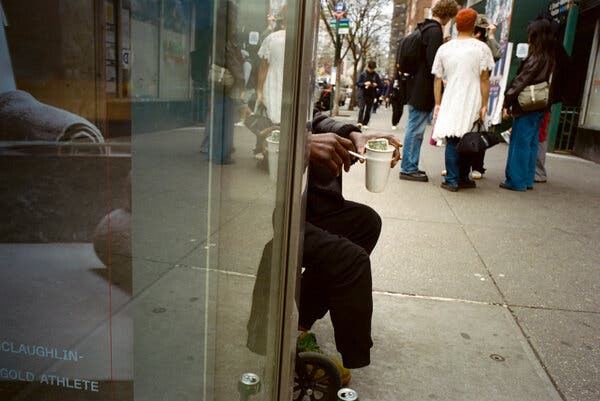UPDATE: A growing cashless economy is leaving vulnerable New Yorkers, including the homeless, struggling to survive. As digital payments surge, individuals like Rob Brender, a 55-year-old disabled man, find themselves increasingly isolated in a city where cash is becoming obsolete.
Just today, reports reveal that as 60 percent of affluent Americans with household incomes over $100,000 complete their purchases without cash, those reliant on coins and bills are facing dire consequences. In stark contrast, only 24 percent of low-income individuals making less than $30,000 can say the same, highlighting a growing divide in financial accessibility.
Brender has been panhandling near stores in New York for most of the past decade, using a simple cup to collect change. “I can’t deal with rejection,” he explained, opting to sit quietly with his cup while listening to 104.3 for entertainment. However, despite the bustling crowds of shoppers, cash donations have dwindled.
In a desperate attempt to adapt to the cashless society, Brender’s friend created a sign with a Venmo username, but he has yet to see anyone use it. “No one stops to use it, and I don’t even know how to access my account,” he lamented. Brender resides at Creedmoor Psychiatric Center, adding a layer of complexity to his already challenging situation.
As New York embraces digital payment methods, authorities must confront the urgent need to support those who still depend on cash. The rise of tap-to-pay and mobile apps offers convenience for many, but it also risks marginalizing individuals who cannot participate in this trend.
Immediate action is necessary for policymakers to bridge this growing gap. As the cashless movement continues to gain traction, advocates for the vulnerable are calling for measures to ensure that no one is left behind in this rapidly evolving economy.
Stay tuned for the latest updates on this developing story as more voices from the streets of New York bring attention to the human impact of a cashless society.
